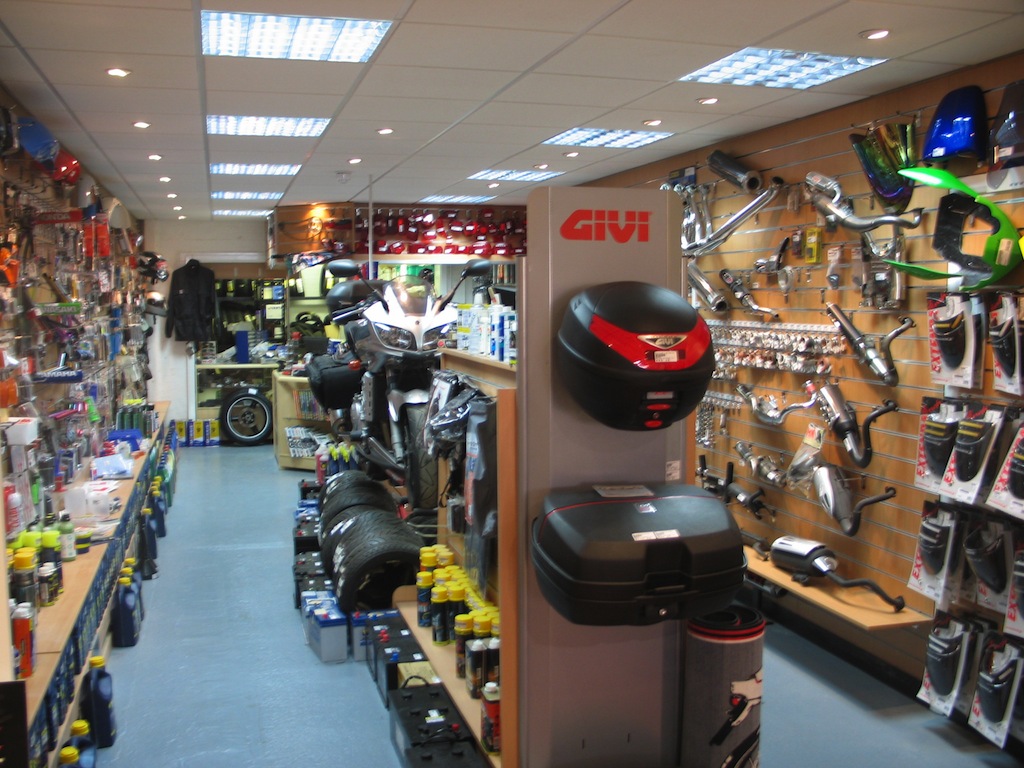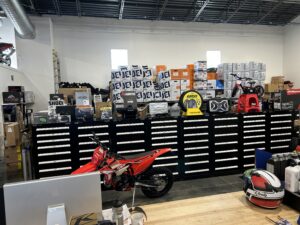Must-Have Motocross Gear: Boost Your Riding Experience Today
Must-Have Motocross Gear: Boost Your Riding Experience Today
Blog Article
Recognizing the Important Parts of a Bike: A Comprehensive Guide for Lovers
For motorcycle lovers looking to boost their riding experience and ensure their bikes run efficiently, understanding the necessary parts of a motorcycle is paramount. Each component, from the engine's intricate functions to the crucial function of the stopping systems, not just affects performance but additionally safety and comfort.
Engine Components

The camshaft plays a critical function in managing the timing of the engine's valves, guaranteeing the precise opening and closing essential for effective gas and air consumption, as well as exhaust expulsion. This timing is critical to preserving ideal engine performance and efficiency. In addition, the carburetor or gas shot system, depending upon the motorbike version, is accountable for blending air with gas in the correct proportion for burning.
The cooling system, either air or liquid-based, works to maintain the engine's temperature level within operational restrictions, preventing overheating and guaranteeing longevity - mx gear nz. Each component, diligently designed and incorporated, adds to the smooth procedure of the engine, defining the bike's power result and general efficiency
Transmission System
Integral to the motorcycle's capability, the transmission system guarantees reliable power transfer from the engine to the wheels. This system makes up several critical parts, including the clutch, gearbox, and last drive, each playing an essential function in converting the engine's power into movement. The clutch, commonly operated by a hand lever, offers to disengage the engine and engage from the transmission, allowing for smooth equipment changes and regulated acceleration.
The transmission, usually described as the transmission appropriate, contains a set of gears that bikers can manually shift via to change the bike's rate and torque output. These gears are arranged in a sequence that enables the motorcycle to accelerate efficiently and preserve optimum engine performance across numerous speeds. Most bikes utilize a consecutive gearbox, requiring the cyclist to move equipments in a predetermined order.
Braking Systems
While recognizing the transmission system is essential to taking advantage of a motorbike's power, similarly essential is the ability to control and quit that power efficiently, which is where braking devices enter into play. Brakes are vital for security and performance, supplying the rider with the needed control to browse numerous terrains and problems. Generally, bikes feature 2 sorts of stopping systems: disc brakes and drum brakes.
Disc brakes are much more prevalent in contemporary motorbikes due to their premium performance. This system supplies much better warmth dissipation, constant efficiency, and enhanced stopping power, especially in wet problems.
Conversely, drum brakes, though much less common, are still located in some bikes. They work by pushing brake shoes versus the internal surface of a drum attached to the wheel. While normally less effective in heat dissipation and stopping power, drum brakes are less complex and more cost-efficient.
Recognizing these stopping systems' subtleties allows bikers to maintain their bikes effectively and value the engineering that ensures safe and efficient stopping.
Suspension and Steering
Suspension and steering systems are vital components that substantially affect a motorcycle's handling and ride comfort. The suspension system, consisting of forks at the front and shock absorbers at the rear, soaks up road abnormalities, enhancing security and control. Front forks, commonly telescopic or upside down, compress and rebound to alleviate effects, while rear shock absorbers maintain tire contact with the roadway, vital for traction and security.
Guiding, centered around the handlebars, attaches the motorcyclist to the bike's directional control. The steering head bearings ensure smooth operation, allowing specific maneuverability. Correct alignment and maintenance of these bearings are critical for foreseeable steering action and reducing motorcyclist tiredness.
The suspension's adjustability is one more essential facet; preload, damping, and rebound setups permit modification to fit different riding conditions and designs. This versatility is necessary for maximizing efficiency, whether navigating urban streets or taking on sturdy routes. Advancements like electronic suspension systems offer real-time modifications, boosting experience quality across varied surfaces.

Electrical Solutions
After ensuring a click for more info regulated and smooth ride via reliable suspension and guiding systems, interest turns to the electric systems, a pivotal element of contemporary motorcycles. These systems play an essential duty not only in beginning the engine but likewise in powering different elements that improve the performance and safety and security of the bike.
At the heart of a bike's electrical system is the battery, which stores electrical heated motorcycle gloves power needed for starting the engine and powering auxiliary systems - motocross gear nz. The generator or generator, paired with the rectifier-regulator, makes certain the battery stays billed while the bike functions, transforming mechanical energy into electric power and keeping voltage levels
The ignition system, one more vital component, is accountable for sparking the air-fuel mix in the engine's cyndrical tubes. Modern motorbikes commonly use a digital ignition system, providing better efficiency and integrity compared to standard systems.
Lighting systems, including fronts lights, tail lights, and signs, are additionally important, making certain visibility and safety and security for the rider. Extra digital parts such as sensing units, control devices, and displays contribute to advanced features like fuel injection monitoring, anti-lock braking systems (ABDOMINAL), and electronic control panels, further enhancing the riding experience.
Final Thought
An extensive understanding of a motorcycle's essential elements, consisting of the engine, transmission system, braking mechanisms, suspension, guiding, and electrical systems, is indispensable for enthusiasts aiming to enhance performance, safety, and comfort. Proficiency of these components enables informed choices concerning maintenance and upgrades, inevitably improving the riding experience. By incorporating this understanding, motorcyclists can ensure their bikes run at peak effectiveness and dependability, therefore making the most of both pleasure and longevity of their automobiles.
For motorcycle enthusiasts looking to boost their riding experience and guarantee their bikes run efficiently, recognizing the crucial components of Source a motorcycle is vital.Integral to the bike's performance, the transmission system guarantees efficient power transfer from the engine to the wheels.While understanding the transmission system is crucial to using a motorcycle's power, similarly important is the ability to regulate and stop that power effectively, which is where stopping systems come into play. Usually, bikes feature two types of braking systems: disc brakes and drum brakes.
A thorough understanding of a motorcycle's essential parts, consisting of the engine, transmission system, stopping devices, suspension, steering, and electrical systems, is indispensable for enthusiasts aiming to optimize convenience, performance, and safety.
Report this page